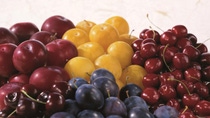Agriculture
FAQs | Glufosinate-ammonium
What is Glufosinate-ammonium?
Glufosinate-ammonium is a vitally important crop protection tool that farmers have used safely for 30 years to control weeds in over 100 crops. It is one of the most effective herbicides available for treating weeds in orchards, vineyards and other herbicide-resistant LibertyLink crops such as soybeans, corn, canola or cotton. Crucially, its distinguishing chemistry and ‘mode of action’ help farmers avoid weed resistance.
What alternatives to using Glufosinate-ammonium does the farmer have?
Glufosinate-ammonium is an essential tool for farmers to maintain an economically viable business while maintaining healthy crops. Alternative chemical treatments can be used in some circumstances but these often affect whole plants rather than just the part of the plant with which they come into contact, which would harm the crop. Alternative chemical treatments also tend to have a smaller spectrum of control. Using mechanical weed control methods is usually considerably more costly and not always feasible.
Does Glufosinate-ammonium pose risks to human health?
Glufosinate-ammonium has been the choice of farmers for 30 years. During this period it has been evaluated by multiple independent regulatory authorities worldwide on a regular basis and certified as safe in use when used according to label instructions. BASF supports various product stewardship initiatives which instruct farmers on how to use the product correctly.
Is Glufosinate-ammonium toxic? If so, is it safe for use?
In the European Union, Glufosinate-ammonium is classified for presumed human reproductive toxicity, based on laboratory studies – for example, on rats – at doses impossible under realistic and responsible conditions of use. Glufosinate-ammonium is not classified for carcinogenic or endocrine disrupting effects.
Glufosinate-ammonium has been used safely for 30 years, on more than 100 crops, and to-date, there are no known cases of harm to humans when applied according to labelled instructions. This reflects, firstly, that the dosage stipulated is far lower than the relevant safety thresholds, ensuring a wide margin of safety for workers and others near the farm during and after application. It also reflects the existing use of various measures – ranging from training on how to apply the product in line with the specific soil and weather conditions of the farm, to use of technologies to reduce exposure.
Furthermore, residues of Glufosinate-ammonium on food, if present, are at levels far lower than safety threshold limits; an average person would have to consume more than 250 apples in a single day in order to breach the toxicological safety threshold limits.
Is Glufosinate-ammonium considered as an endocrine disruptor? Does it cause cancer?
Based on all the available information and studies, Glufosinate-ammonium shows no evidence of being an endocrine disruptor. Additionally, it is not classified as carcinogenic. The herbicide is safe to consumers, operators and the environment when used according to label instructions.
Is Glufosinate-ammonium present in our food?
The exposure of consumers to residues of Glufosinate-ammonium via food is estimated based on the results of field residue trials conducted according to worst-case assumptions, including the highest authorized application rates and the shortest authorized pre-harvest intervals. Based on these tests, any traces of Glufosinate-ammonium that may remain on crops and that are ingested directly by humans or indirectly as a result of consuming meat and milk from animals that have fed on such crops are limited at stricter levels than defined toxicological safety thresholds. Therefore, they do not pose a health risk. For example, an average person would have to consume more than 250 apples in a single day in order to breach the toxicological safety threshold limits.
How safe is Glufosinate-ammonium to the environment?
Glufosinate-ammonium has been rigorously tested through lengthy trials for environmental safety over the course of 30 years. When label instructions are followed, it is safe to use. The herbicide is not significantly active in soil and is rapidly degraded by micro-organisms in the soil, making water contamination very unlikely. Risk to birds, bees, aquatic organisms, earthworms and other soil organisms is also very unlikely when the product is used according to label instructions.
How are herbicides, including Glufosinate-ammonium, tested for safety during the product development stage?
Before an herbicide is allowed on the market, the manufacturer must perform a thorough safety assessment. This is a long and comprehensive process that involves many tests and field trials. If a chemical is found to be an efficient weed control agent, it is then screened for its safety in relation to humans, animals, and the environment. Toxicological tests and environmental assessments examine any potential risks to health and the effects on soil, water and air. Controlled field trials conducted in close-to-real-farm conditions take worst case scenario levels of exposure into account to determine high safety margins. All data are presented to the relevant regulatory authorities who review the findings, and make a decision regarding the authorization of the product. This decision is based on a comprehensive scientific peer-reviewed analysis.



